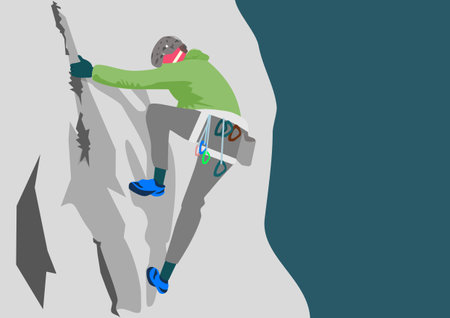1. Understanding the Risks of UK Winter Hiking
Winter solo hiking in the UK demands a thorough understanding of the distinct risks posed by the British landscape during the colder months. The weather is notably unpredictable, with sudden shifts from clear skies to heavy rain, sleet, or snow being commonplace even within a single day. This volatility can rapidly increase exposure risks and complicate navigation for those trekking alone. Early nightfall further amplifies these challenges, as daylight hours are particularly limited in winter, leaving hikers with narrow windows to complete routes safely. Additionally, many popular walking areas—such as the Scottish Highlands, Lake District, and Snowdonia—feature isolated terrains where mobile phone signals can be unreliable and help is often far away. These factors combined mean that solo hikers must approach each journey with heightened vigilance, robust planning, and an appreciation for how quickly conditions can deteriorate in the UK’s wild spaces.
Essential Safety Precautions for Solo Hikers
Winter solo hiking in the UK demands a disciplined approach to personal safety. Unlike group excursions, solo hikers must take full responsibility for their well-being, especially when tackling unpredictable British winter weather. Below are the critical steps every solo hiker should follow to enhance safety and preparedness.
Route Planning and Navigation
Meticulous route planning is fundamental. Study your intended path using both OS maps and digital navigation tools. Familiarise yourself with escape routes and alternative paths in case of sudden weather changes or unexpected obstacles. Always factor in shorter daylight hours during winter months, aiming to complete your hike well before dusk.
Informing a Trusted Contact
Never set out without informing someone you trust about your hiking plans. Provide them with details including:
| Information to Share | Details |
|---|---|
| Route Description | Start/finish points, waypoints, expected times |
| Estimated Return Time | Your latest return time to raise the alarm if overdue |
| Emergency Plan | Instructions on what to do if contact cannot be established |
Understanding Local Mountain Rescue Protocols
The UK has a robust volunteer-based mountain rescue system, but response times can vary due to terrain and weather conditions. Before heading out, familiarise yourself with how to summon help:
- If you have mobile signal, dial 999 or 112 and ask for Police, then Mountain Rescue.
- Know the precise location references (using OS grid references or What3Words) to communicate your position quickly.
- Certain remote areas may have no signal—carry a whistle (six blasts for distress) and consider a personal locator beacon (PLB).
Summary Table: Solo Hiking Safety Steps
| Step | Description |
|---|---|
| Plan Route Thoroughly | Use reliable maps; identify safe exits and alternatives. |
| Notify Contact Person | Share detailed itinerary and emergency protocol. |
| Know Emergency Procedures | Understand how to reach local mountain rescue services. |
| Prepare for No Signal Zones | Carry traditional signalling devices or PLB. |
Final Thought on Winter Solo Safety
No single precaution guarantees absolute safety, but combining these steps significantly improves your resilience against winter hazards. Always respect the unique challenges posed by the UKs landscapes and weather—vigilance and preparation are your best allies on any solo adventure.

3. Must-Have Winter Gear for British Conditions
When undertaking solo winter hikes across the UK, your choice of gear is pivotal to both safety and comfort. The unpredictable nature of British weather, from sudden sleet showers in the Lake District to icy winds on the Scottish Munros, demands a well-considered kit list. Below are the essentials tailored specifically for these unique conditions.
Waterproof Layers: Your First Line of Defence
The UK’s winter brings frequent rain, snow, and persistent dampness. Invest in a high-quality, breathable waterproof jacket and overtrousers—look for garments with taped seams and adjustable hoods for maximum protection. Layering is key; a moisture-wicking base layer followed by an insulating mid-layer (such as fleece or synthetic fill) ensures warmth while allowing you to regulate body temperature efficiently.
Navigation Tools for Low Visibility
British hills and moors are notorious for thick fog and quickly changing visibility. Carry a reliable map and compass—even if you’re confident with GPS devices, batteries can drain rapidly in cold temperatures. Consider a GPS unit with Ordnance Survey mapping as a backup, but never rely solely on electronics. A headtorch with spare batteries is also essential for navigating short winter days and emergency situations.
Footwear for Icy and Wet Terrain
Appropriate boots are non-negotiable in British winter hiking. Choose sturdy, waterproof hiking boots with deep lugs for grip on muddy or icy paths. Gaiters offer further protection from wet grass, snow, or boggy ground. For routes prone to ice or compacted snow, lightweight microspikes or crampons compatible with your boots can provide vital traction without excessive bulk.
Additional Essentials
Don’t overlook warm gloves (ideally waterproof), a thermal hat that covers your ears, and insulated socks designed to keep feet dry. A robust rucksack liner keeps spare clothing and food dry, while an emergency bivvy bag adds an extra layer of security should you be delayed or forced to shelter unexpectedly.
UK-Specific Considerations
Finally, always pack a whistle and reflective gear—British daylight hours are short in winter, and poor weather can make you difficult to spot even at close range. By equipping yourself thoughtfully for UK-specific hazards, you set the foundation for a safer and more enjoyable solo hiking experience this winter.
4. Navigation and Communication Tips
Winter solo hiking in the UK demands impeccable navigation skills and robust communication plans, especially as daylight hours are short and weather conditions can deteriorate rapidly. It is essential to combine traditional tools like Ordnance Survey (OS) maps with modern GPS technology, ensuring redundancy in case of device failure or poor visibility.
Ordnance Survey Maps: The Gold Standard
Always carry a physical OS map relevant to your hiking area. These detailed maps provide crucial topographical information and rights of way that digital devices may overlook. Take time to familiarise yourself with key symbols and grid references before setting out. Waterproof map cases are highly recommended to protect your map from rain or snow.
GPS Devices: Modern Precision
While smartphones offer GPS functionality, dedicated handheld GPS units are more reliable in harsh winter conditions due to their robust build and longer battery life. Make sure your device is fully charged and consider bringing spare batteries or a power bank. Pre-load your route onto the device, but do not rely solely on electronic navigation.
| Navigation Tool | Pros | Cons |
|---|---|---|
| Ordnance Survey Map & Compass | No battery required, highly detailed, universally recognised in the UK | Requires skill and practice, can be difficult to use in severe weather |
| Handheld GPS Device | Accurate positioning, easy route tracking, performs well in low visibility | Battery dependent, may malfunction in extreme cold |
| Smartphone GPS Apps | User-friendly, multi-functional, access to live weather updates | Limited battery life, vulnerable to water damage and signal loss |
Communication Strategies for Limited Signal Areas
The UK’s upland areas—such as the Lake District, Snowdonia, or Scottish Highlands—often have patchy mobile coverage. Inform a trusted contact of your intended route and expected return time before departure. Consider carrying a personal locator beacon (PLB) or a satellite messenger; these devices can transmit your location and an SOS even when there is no mobile reception.
Essential Communication Checklist:
- Share Your Plans: Always let someone know your route and estimated timings.
- Cary a PLB/Satellite Messenger: For emergency communication where mobiles fail.
- Know Emergency Procedures: In the UK, dial 999 or 112 for Mountain Rescue; be prepared to give an accurate location using OS grid references.
- Spare Power: Bring a power bank to recharge devices if needed.
Final Word from the Trail:
A combination of traditional navigation skills and modern technology is your best safeguard against becoming lost or stranded during winter solo hikes in the UK. Preparedness is not just prudent—it’s essential for safe and enjoyable adventuring.
5. Wildlife and Environmental Considerations
Solo winter hiking in the UK requires heightened awareness of your surroundings, not only for your own safety but also to ensure you act as a responsible custodian of the countryside. The British landscape is home to a diverse range of wildlife, some of which become more vulnerable during the colder months. When venturing out, it is crucial to respect all wildlife by keeping a safe distance from animals, refraining from feeding them, and avoiding disturbing their natural habitats—particularly when food sources are scarce or breeding grounds need to be left undisturbed.
Winter ecosystems can be surprisingly fragile. Frost, snow, and wet ground make many footpaths and moorlands highly susceptible to erosion. To minimise your impact, always stick to established trails even if they appear muddy or icy, as venturing off path can cause lasting damage to sensitive vegetation and disrupt animal shelters. Additionally, be mindful of where you pause for breaks; avoid sitting or placing gear on delicate mosses and lichens that are slow to recover.
Understanding and adhering to the Countryside Code is essential for anyone hiking in the UK. Key responsibilities include closing gates behind you, leaving no trace by taking all litter home, and not picking plants or removing natural features. If you encounter livestock or working dogs, give them space and never attempt to interact. Remember that landowners and local communities rely on walkers’ cooperation to maintain both safety and ecological balance throughout the winter season.
By respecting wildlife, minimising environmental impact, and observing countryside etiquette, solo hikers contribute positively to the preservation of Britain’s natural beauty for generations to come.
6. Emergency Planning and First Aid
When undertaking a winter solo hike in the UK, robust emergency planning is as vital as your physical preparations. The unpredictable British weather, limited daylight hours, and remote landscapes require hikers to be self-reliant and prepared for emergencies.
Essential Items for a Winter First Aid Kit
Your first aid kit should be tailored for cold conditions. In addition to standard supplies such as plasters, antiseptic wipes, bandages, and painkillers, include thermal blankets, hand warmers, blister plasters, a whistle, and waterproof matches or a lighter. Carry high-energy snacks like Kendal Mint Cake or flapjacks for quick energy boosts in an emergency.
Knowing When and How to Call for Help
Familiarise yourself with the UK’s mountain rescue protocol. If you are in immediate danger or seriously injured, dial 999 or 112 and ask for Police then Mountain Rescue. It’s important to give precise location details—using Ordnance Survey grid references or the What3Words app can greatly assist rescuers. Always inform someone of your planned route and expected return time before setting out.
Specific Emergency Procedures in the UK Landscape
The UK’s varied terrain—from the fells of the Lake District to the Scottish Highlands—demands situational awareness. In exposed areas, hypothermia is a real threat; know how to recognise early symptoms such as uncontrollable shivering and confusion. Seek shelter immediately and use spare dry clothing from your kit to insulate yourself. If lost in whiteout conditions, avoid moving unless you are confident in your navigation—many accidents occur when hikers attempt to find their own way in poor visibility.
Key Takeaways
- Carry a comprehensive winter-specific first aid kit
- Use reliable navigation tools and share your itinerary
- Know how to contact local rescue services efficiently
- Be prepared for rapid weather changes and prolonged exposure
Proper emergency planning ensures that even if things go awry on a solo winter hike, you are equipped to respond swiftly and safely—a critical skill for any responsible hillwalker exploring the UKs wild winter landscapes.

